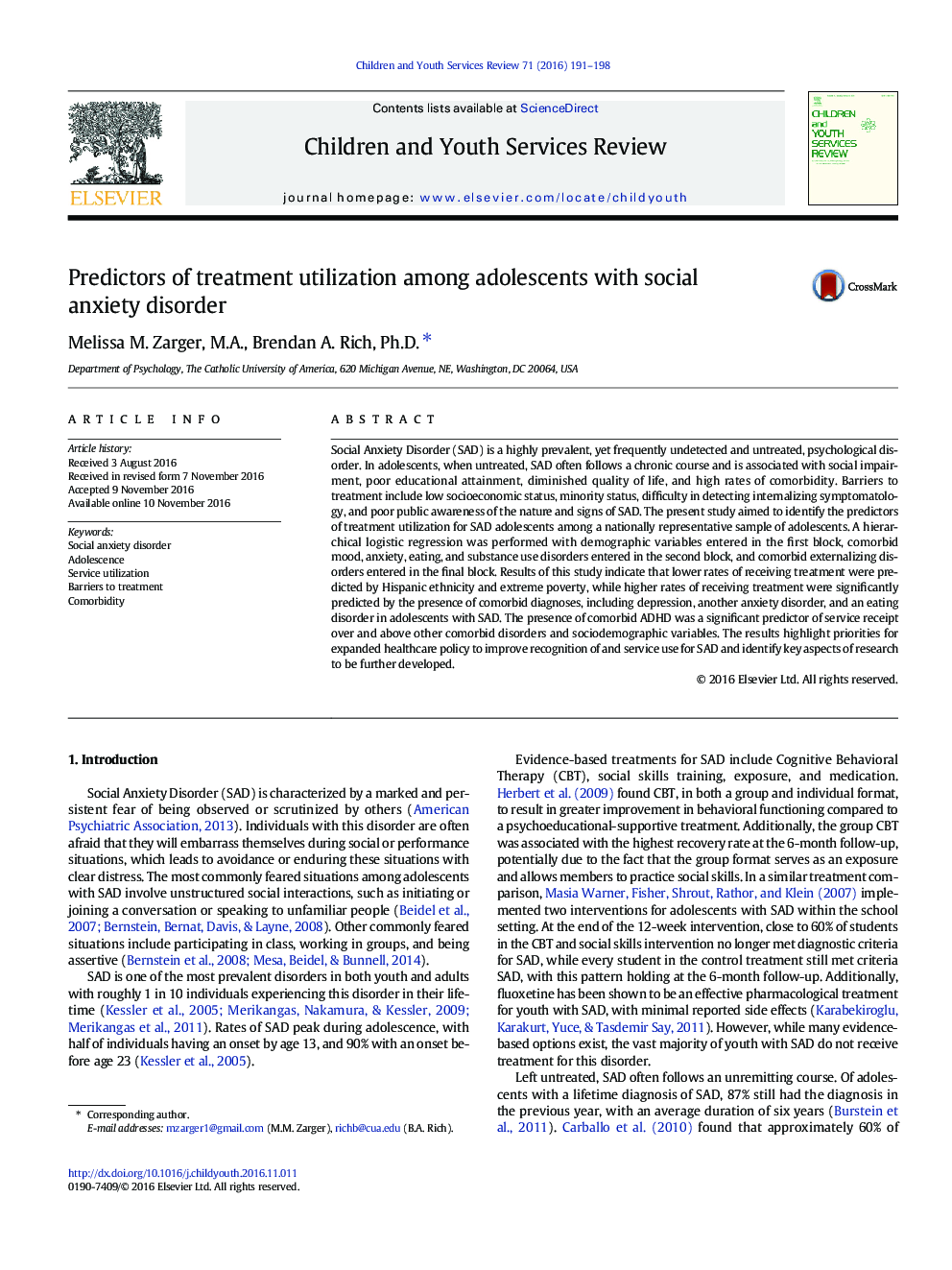| Article ID | Journal | Published Year | Pages | File Type |
|---|---|---|---|---|
| 4936493 | Children and Youth Services Review | 2016 | 8 Pages |
Abstract
Social Anxiety Disorder (SAD) is a highly prevalent, yet frequently undetected and untreated, psychological disorder. In adolescents, when untreated, SAD often follows a chronic course and is associated with social impairment, poor educational attainment, diminished quality of life, and high rates of comorbidity. Barriers to treatment include low socioeconomic status, minority status, difficulty in detecting internalizing symptomatology, and poor public awareness of the nature and signs of SAD. The present study aimed to identify the predictors of treatment utilization for SAD adolescents among a nationally representative sample of adolescents. A hierarchical logistic regression was performed with demographic variables entered in the first block, comorbid mood, anxiety, eating, and substance use disorders entered in the second block, and comorbid externalizing disorders entered in the final block. Results of this study indicate that lower rates of receiving treatment were predicted by Hispanic ethnicity and extreme poverty, while higher rates of receiving treatment were significantly predicted by the presence of comorbid diagnoses, including depression, another anxiety disorder, and an eating disorder in adolescents with SAD. The presence of comorbid ADHD was a significant predictor of service receipt over and above other comorbid disorders and sociodemographic variables. The results highlight priorities for expanded healthcare policy to improve recognition of and service use for SAD and identify key aspects of research to be further developed.
Related Topics
Health Sciences
Medicine and Dentistry
Perinatology, Pediatrics and Child Health
Authors
Melissa M. M.A., Brendan A. Ph.D.,
